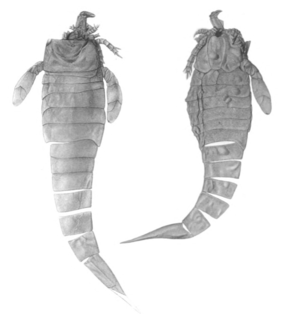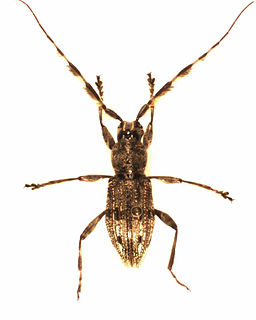
Whiteflies are Hemipterans that typically feed on the undersides of plant leaves. They comprise the family Aleyrodidae, the only family in the superfamily Aleyrodoidea. More than 1550 species have been described.

The green darner or common green darner, after its resemblance to a darning needle, is a species of dragonfly in the family Aeshnidae. One of the most common and abundant species throughout North America, it also ranges south to Panama. It is well known for its great migration distance from the northern United States south into Texas and Mexico. It also occurs in the Caribbean, Tahiti, and Asia from Japan to mainland China. It is the official insect for the state of Washington in the United States.

The spiny softshell turtle is a species of softshell turtle, one of the largest freshwater turtle species in North America. Both the common name, spiny softshell, and the specific name, spinifera (spine-bearing), refer to the spiny, cone-like projections on the leading edge of the carapace, which are not scutes (scales).

The Gulf Coast spiny softshell turtle, a subspecies in the Trionychidae family of softshell turtles, is endemic to the south-eastern United States.

Nemacheilus is a genus of stone loaches native to Asia.
Pseudoniphargus is a genus of crustacean in family Pseudoniphargidae. It contains the following species:

Hughmilleria is a genus of eurypterid, an extinct group of aquatic arthropods. Fossils of Hughmilleria have been discovered in deposits of the Silurian age in China and the United States. Classified as part of the basal family Hughmilleriidae, the genus contains three species, H. shawangunk from the eastern United States, H. socialis from Pittsford, New York, and H. wangi from Hunan, China. The genus is named in honor of the Scottish geologist Hugh Miller.

Gephyromantis is a frog genus in the mantellid subfamily Mantellinae. This genus is restricted to Madagascar. At present it contains 45 species divided into six subgenera.
In biology, a species is the basic unit of classification and a taxonomic rank of an organism, as well as a unit of biodiversity. A species is often defined as the largest group of organisms in which any two individuals of the appropriate sexes or mating types can produce fertile offspring, typically by sexual reproduction. Other ways of defining species include their karyotype, DNA sequence, morphology, behaviour or ecological niche. In addition, paleontologists use the concept of the chronospecies since fossil reproduction cannot be examined.
Nemacheilus spiniferus is a species of cyprinid fish in the genus Nemacheilus from western and north western Borneo.
Spinipogon is a genus of moths belonging to the family Tortricidae.

Austrofusus is a genus of medium-sized sea snails or whelks, marine gastropod molluscs in the family Buccinidae, the true whelks.

Amitus hesperidum is a tiny parasitic wasp. It is a parasitoid of the citrus blackfly, Aleurocanthus woglumi, an important pest of citrus trees. It is a native of Asia but has been introduced to many other parts of the world as a means of controlling the citrus blackfly.
Megachoriolaus is a genus of beetles in the family Cerambycidae, containing the following species:

Cylindrococcus is a genus of scale insects that induces galls on plants of the genus Allocasuarina. There are two described species of Cylindrococcus, both of which occur only in Australia. The galls of adult females look somewhat similar to the cone-like "fruit" of the host plant and might be mistaken for such.

Parmenini is a tribe of longhorn beetles of the subfamily Lamiinae.
Rose Marie Antoinette Blommers-Schlösser is a Dutch herpetologist and entomologist.

Hughmilleriidae is a family of eurypterids, an extinct group of aquatic arthropods. The hughmilleriids were the most basal members of the superfamily Pterygotioidea, in contrast with the more derived families Pterygotidae and Slimonidae. Despite their classification as pterygotioids, the hughmilleriids possessed several characteristics shared with other eurypterid groups, such as the lanceolate telson.

Aleurocanthus spiniferus, the citrus spiny whitefly, is an important pest of citrus and tea plants. They are part of the order Hemiptera, and the family Aleyrodidae, where more than 1550 species have been described. A. spiniferus is indigenous to parts of tropical Asia, where it was first discovered in Japan. Since its discovery, it has now spread to numerous continents including Africa, Australia, America, Pacific Islands and Italy. Wherever it is found, it has become a highly destructive pest. Two populations of A. spiniferus have been found according to the plant or crop they infest: the citrus spiny whitefly, as well as the tea spiny whitefly.

Campion is a genus of lacewings belonging to the family Mantispidae.












